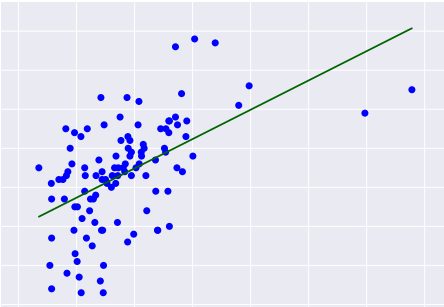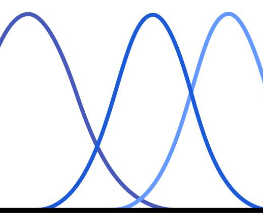- by Jimmy Fisher
- Oct 19, 2024
Monte Carlo Methods
- By Jimmy Fisher
- Oct 19, 2024
- in Techniques

Monte Carlo simulations have become a cornerstone in the realm of predictive analytics, offering insights and forecasting capabilities across various industries. This statistical technique utilizes randomness to model complex systems, assess risks, and manage uncertainty. This guide explores the mechanics of Monte Carlo simulations, recent developments, and their wide-ranging applications.
What Are Monte Carlo Simulations?
Monte Carlo simulations employ random sampling to address and solve problems that may appear deterministic in nature. By simulating numerous potential outcomes, they allow analysts to predict the probability distribution of different scenarios, providing invaluable insights in fields fraught with uncertainty.
Key Concepts:
- Random
Sampling: This is the essence of Monte Carlo simulations. By
generating random numbers within a specified range, these simulations
scrutinize numerous potential outcomes, aiding in the comprehension of
variability and uncertainty in complex systems.
- Predictive
Modeling: Monte Carlo methods excel in forecasting future events. Be
it financial markets or engineering results, these simulations offer a
window into prospective occurrences under specified conditions.
- What-If
Analysis: By modeling various scenarios, Monte Carlo simulations
enable decision-makers to evaluate potential outcomes of different
strategies, offering a comprehensive perspective on risk and reward.
Significant recent advancements have enhanced Monte Carlo
simulations' capabilities and broadened their applicability:
- Algorithm
Enhancement: Breakthroughs in algorithm design have increased
efficiency in managing systems with long-range interactions, yielding
faster and more accurate results.
- High-Performance
Computing Integration: Merging high-performance computing with Monte
Carlo simulations enables tackling larger and more complex systems,
reducing computation time significantly.
- Machine
Learning Integration: The merger of Monte Carlo methods with machine
learning has opened new paths for predictive modeling. This synergy
refines models by better incorporating uncertainty and variance.
Monte Carlo simulations are an integral tool in modern data
science, enabling detailed predictive analytics across various fields. With
advancements in computational power and integration with machine learning,
their capabilities continue to expand, addressing more intricate problems with
improved accuracy. As these techniques evolve, their applications are expected
to grow, offering profound insights into the uncertain dynamics of real-world
systems.
Example Python Code
The fundamental idea of Monte Carlo simulations is indeed to run multiple iterations, to use random sampling to approximate complex results or probability distributions. Monte Carlo methods are widely used to estimate values that are difficult to compute analytically by repeatedly simulating a process and observing the distribution (or average) of results across many trials.
The code below is a simple Monte Carlo Pi estimation. The method uses random sampling within a defined space to approximate Pi.
import random
def monte_carlo_pi(iterations): inside_circle = 0
for _ in range(iterations): x, y = random.random(), random.random() distance = x**2 + y**2 if distance <= 1: inside_circle += 1
return (inside_circle / iterations) * 4
# Running the simulation with 1,000,000 iterationsestimated_pi = monte_carlo_pi(1000000)print(f"Estimated value of Pi: {estimated_pi}")
import random
def monte_carlo_pi(iterations):
inside_circle = 0
for _ in range(iterations):
x, y = random.random(), random.random()
distance = x**2 + y**2
if distance <= 1:
inside_circle += 1
return (inside_circle / iterations) * 4
# Running the simulation with 1,000,000 iterations
estimated_pi = monte_carlo_pi(1000000)
print(f"Estimated value of Pi: {estimated_pi}")
Code explanation:
Define the Monte Carlo Function: monte_carlo_pi takes an argument iterations, which specifies the number of random points to generate.
Initialize Variables: inside_circle is initialized to zero to keep track of how many random points fall within the unit circle.
Generate Random Points: The for loop iterates iterations times, each time generating a random point (x, y) where x and y are between 0 and 1.
Calculate Distance and Count Points Inside the Circle: For each point (x, y), the distance from the origin (0, 0) is calculated as distance = x**2 + y**2. If distance is less than or equal to 1, the point is inside the unit circle, so inside_circle is incremented.
Estimate Pi: After the loop, the ratio of points inside the circle to the total points is multiplied by 4 to estimate Pi. This works because the ratio of points inside the circle to the total points approximates the area of the circle divided by the area of the square, which is π/4.
This function monte_carlo_pi(1000000) is called with 1,000,000 iterations, and the output approximates Pi.
Check out my Monte Carlo simulation projecting the future U.S. population using Census data for a time series (and more practical) example. If you're interested in learning more about this Monte Carlo simulation approach, here are a few free online resources available to you:





